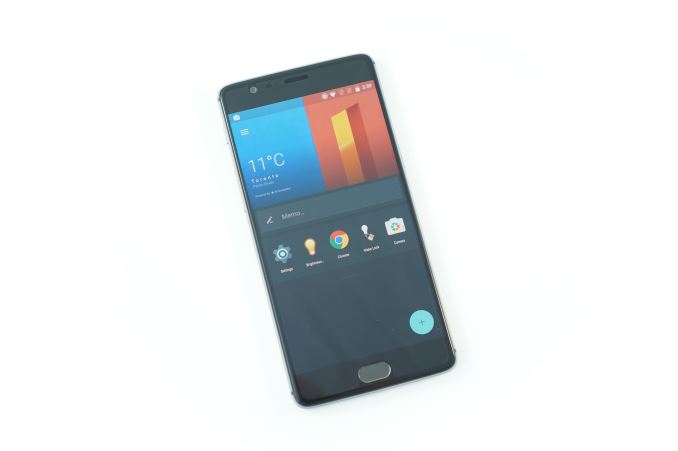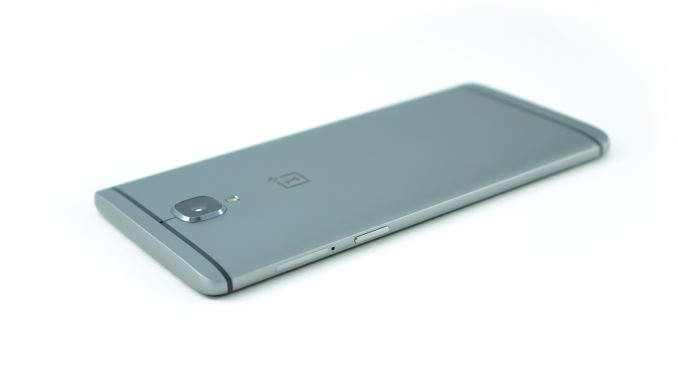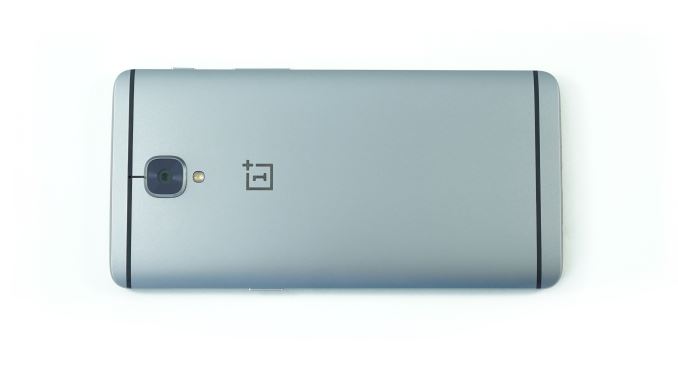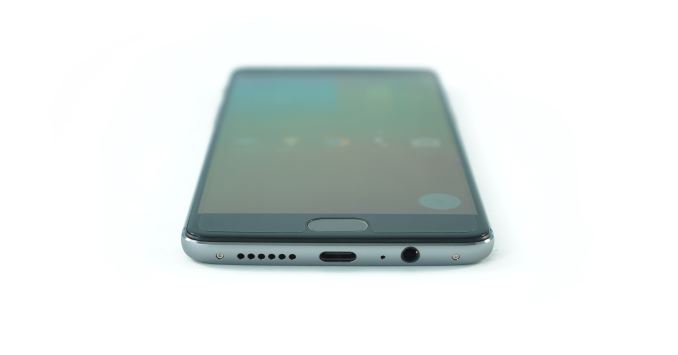The OnePlus 3 Review
by Brandon Chester on June 20, 2016 8:00 AM EST- Posted in
- Smartphones
- OnePlus
- OnePlus 3

In 2014 OnePlus was a company that was basically unheard of. Despite that, there was great anticipation in the Android enthusiast community about a new smartphone coming from this new company. Their first smartphone ended up being called the OnePlus One, and it was arguably the first device in a trend of smartphones that tried to bring flagship specifications to devices with prices much lower than what the big players in the smartphone market demanded for their best smartphones. The OnePlus One certainly wasn't perfect, but it showed that it was possible to produce a high spec smartphone for hundreds of dollars less than Android flagships, and what OnePlus needed to improve on was their execution.
A year came and went, and OnePlus came out with the OnePlus 2. This was during a time where the Android market was still struggling to deal with the issues posed by Qualcomm's Snapdragon 808 and 810 SoCs, which put Android performance improvements at something of a standstill. In the case of the OnePlus 2, I discovered that OnePlus had put mechanisms in place that reduced web performance even further, and as I reviewed the OnePlus 2 I discovered concerning regressions in other aspects like the phone's display, and its battery life.
Moving into 2016, we now have the OnePlus 3. At this point OnePlus now has a better variety of hardware to choose from, and they should know exactly what to fix from the OnePlus 2 to make a great smartphone. However, the smartphone market gets more competitive with each year that passes, and it's no longer enough to simply put good specs in a device and fail with the execution. Finding out how well OnePlus executed with the user experience is what I'm here to tell you, but before getting in to that, it's important to see how the OnePlus 3 compares to its predecessor.
| OnePlus 2 | OnePlus 3 | |
| SoC | Qualcomm Snapdragon 810 | Qualcomm Snapdragon 820 |
| GPU | Adreno 430 | Adreno 530 |
| RAM | 2/4GB LPDDR4 | 6GB LPDDR4 |
| Display | 5.5" 1920 x 1080 IPS LCD | 5.5" 1920 x 1080 PenTile AMOLED |
| Size / Mass | 151.8 x 74.9 x 9.85mm, 175g | 152.7 x 74.7 x 7.35mm, 158g |
| Battery | 3300 mAh | 3000 mAh |
| Rear Camera | 13MP 1.3 μm OmniVision OV13860 f/2.0 | 16MP 1.1 μm Sony IMX298, f/2.0, OIS |
| Front Camera | 5MP 1.4 μm OmniVision OV5648, f/2.0 | 8MP 1.4 μm Sony IMX179, f/2.0 |
| Storage | 16/64GB eMMC | 64GB UFS 2.0 |
| I/O | USB 2.0 Type-C connector, 3.5mm audio | |
| Connectivity | 802.11a/b/g/n/ac + BT 4.1 USB-C, GPS/GNSS |
802.11a/b/g/n/ac + BT 4.2, USB-C NFC, GPS/GNSS |
| Price | $329 (3GB/16GB) $389 (4GB/64GB) |
$399 (6GB/64GB) |
At least at a high level, the OnePlus 3 shows a great deal of promise. The move from Snapdragon 810 to 820 will certainly improve performance, especially when you consider the app detection that OnePlus was doing which crippled web performance on the OnePlus 2. There's also a whopping 6GB of RAM. I do wonder if 6GB is overkill only because the number of apps that people actually use on a daily basis may be smaller than the number that 6GB can actually keep resident in memory. It's also worth noting that there is an energy cost to adding more RAM as each memory cell has to be periodically refreshed to maintain data integrity.
OnePlus has moved to an AMOLED display with the OnePlus 3. While it was once the case that AMOLED displays that weren't on Samsung devices exhibited low brightness and poor calibration, recent AMOLED devices have reversed that trend entirely. However, moving from a 1080p RGB LCD to a 1080p PenTile AMOLED does come with a reduction in effective resolution, and I'll talk about that more in the display section.
With the cameras, OnePlus has gone back to Sony sensors. The front-facing camera moves to 8MP, and the rear-facing goes to 16MP. Lenses stay at f/2.0 which I think is a smart move given some of the problems we've seen regarding sharpness and distortion on phones that have moved to even wider apertures. There's more to the camera story than what you see on paper, and I'll be covering that as well.
As for other changes, there's now only one version of the phone which is 6GB of RAM and 64GB of UFS 2.0 storage for $399. I almost never saw the 16GB OnePlus 2 for sale anyway, so this isn't really some sort of pricing upset. As for connectivity, you still have a USB 2.0 based Type-C connector and 802.11ac WiFi, but NFC has made a return which means the OnePlus 3 will be usable with Android Pay and other applications that make use of NFC.
Design
One of the big changes OnePlus has made with the OnePlus 3 is the industrial design. Nothing about the OnePlus One's design was really exceptional, but given that it was bringing many flagship specs to a phone that costed several hundred dollars less than flagship phones of the time it was entirely understandable. With the OnePlus 2 the average price of OnePlus's flagship phone went up, but OnePlus had made some changes to the external design. The phone gained a metal frame but retained its sandstone back cover. To be honest, I wasn't really a fan of the OnePlus 2's design. The metal frame didn't do much to improve how high quality the phone felt, and the back cover wasn't coarse enough to really have an impact on how grippy the chassis was. On top of that, the fact that the display layer of the phone had a plastic border that sat above the metal frame looked kind of cheap, and the increased thickness and mass actually represented regressions from the OnePlus One in some respects.
With the OnePlus 3, OnePlus has moved to an aluminum unibody design. In doing so they've addressed pretty much all of my issues with the OnePlus 2. Starting with the back of the device, you no longer have the sandstone finish. I'm sure many people will disagree, but the OnePlus 2 back cover didn't help me with gripping the phone at all. The OnePlus 3 feels like a much higher quality device, particularly because there are no longer three distinct sections of the phone that all have seams and gaps between one another. The unibody design means the back cover is no longer removable, but as I said in my OnePlus 2 review I think the removable back cover on OnePlus devices was a complete waste anyway because it only served as a way to access the SIM slots, which could have been implemented as a tray on the side of the device. With the OnePlus 3 they've done exactly that, and so the removable back cover isn't needed.
The back cover sees some additional changes, with some being independent of the move to an aluminum chassis. There are now lines for the antennas on the top and bottom of the phone, and the top line connects to the square-shaped camera sitting beneath it, which reminds me of the HTC One M9. On the topic of the camera, there's no longer a separate island that the camera and flash sit upon, which I think is a big improvement on what I felt was one of the least appealing visual aspects of the previous OnePlus devices. The camera does stick out significantly more than it did on the OnePlus 2 which is just a consequence of the significant reduction in thickness, and OnePlus has actually decreased sensor size with this generation so the hump likely would have been even larger if they hadn't. The only other thing to note about the camera area is that there's now just a single LED flash and the camera uses PDAF, while the OnePlus 2 had a dual LED module and an IR module for the laser autofocus.
On the left side of the phone you have the volume rocker and the mute switch, while the right side has the sleep/wake button and the NanoSIM slots. I appreciate that OnePlus has kept their volume rocker on the left side of the phone, and I think the three stage mute switch is an underappreciated feature that more manufacturers should adopt. You can see above that the phone's edges only curve to a point, at which point you have a chamfered edge that meets the display glass. I like the appearance that this provides, but it does mean that you don't have the same smooth feeling when swiping near the edges of the display that you get on a device like the iPhone 6s Plus.
The bottom of the phone is changed from the OnePlus 2. There are no longer any antenna lines since they wrap around the left and right sides of the phone, and there aren't holes drilled on both sides of the USB Type-C port which has allowed the 3.5mm audio jack to be brought to the bottom of the phone. One thing that bothers me is how the 3.5mm jack isn't centered like the rest of the ports and screws, which kind of ruins the visual uniformity. You can also see OnePlus's pre-applied screen protector in the image above. It doesn't quite cover the entire display from edge to edge, and I noticed that a great deal of dust was collecting around the edges so I ended up removing it. It's just your typical plastic screen protector rather than a glass one anyway, although the fact that OnePlus throws it in for free is a nice gesture.
The front of the phone is similar to the OnePlus 2, but it's clear how the overall shape of the phone has changed to become more curved, while the OnePlus 2 was similar to the Nexus 5 in how it had flat sides meeting curved ones at hard angles. I have to say that I prefer the appearance of the OnePlus 3 in this regard, but it may be seen as less unique than the OnePlus 2. As for what's on the front cover, you have the earpiece and front-facing camera on the top, with three capacitive keys on the bottom. The middle key is the home button, which also acts as a fingerprint scanner in the same manner as the OnePlus 2's home key. In my experience the sensor has been quite accurate and just as quick as anything else on the market, and having it on the front of the device provides a better experience than rear-mounted scanners.
OxygenOS provides many ways to customize the phone, so you also have the option to switch the order of the back and recent apps buttons, and if you want software keys OnePlus provides that as an option as well. I covered the major points of OxygenOS in my OnePlus 2 review, and I haven't seen any major changes to it so I'll just refer to that rather than going over the features a second time. The one thing that has changed is that the UI no longer feels unbearably slow and sluggish, and in the next section you'll see exactly why that is.













176 Comments
View All Comments
fanofanand - Monday, June 20, 2016 - link
Not to mention I call BS on his entire statement. You really sit around the water cooler with your colleagues discussing the screen quality of your phone? You discuss how great the colors are? Unless you work for a mobile phone manufacturer, you are either lying or the most boring guy in the office.shktr - Monday, June 20, 2016 - link
I work at an IT company. Talking about new tech on a daily basis. So why would it be BS? Who wouldn't discuss their brand new phone and its performance? That aside, I'm curious why most of the people that review the phone are positive about the display? They are all lying? I agree its not the best out there. Yet saying its a poor display is just wrong.UtilityMax - Wednesday, June 22, 2016 - link
I am not a big display quality nut, but the two things I really care about is max brightness and black levels, which basically means that I expect the screen to look good to an untrained eye, either outdoors or in the dark. So it is disappointing to see that Oneplus 3 has max brightness about on the level of Asus Zenfone 2. A lot of people thought this was not even acceptable on a 200-300 dollar device which Zenfone 2 was, but for a 400USD 2016 "flagship killer" it's ridiculous.Eden-K121D - Monday, June 20, 2016 - link
Yep.People should stop whining and accept the fact that oneplus 3 has a POOR displaygrayson_carr - Monday, June 20, 2016 - link
If you call the OnePlus 3 display poor, then I think you have to call the Galaxy S7 display poor as well because by default its display is no more accurate than the OnePlus 3 display. You have to change the display mode from adaptive to basic to make the S7 display accurate, which let's be honest, only about 0.1% of people who buy the S7 do that. I think Anandtech needs to start publishing display measurements using the default display settings as they come out of the box, because that's what 99.9% of people will use and see when they buy the phone. I'm fine with including measurements of the basic mode as well, but I don't think it should be the only measurements shown. The default settings should be measured and discussed considering that's how most people, even enthusiasts who read this site, will use it.Eden-K121D - Tuesday, June 21, 2016 - link
At Least they give an option to change the mode. Oneplus doesn't even do thatLolimaster - Wednesday, June 22, 2016 - link
You have the option and if you care about accuracy you will use it.Avrg people like colors to poop but once you show them how the colors should look (specially when white/black/greyscale are involved) they dont look back after switching to "basic".
Brandon Chester - Monday, June 20, 2016 - link
The screen is not better than the OnePlus One at all. There's no subjectivity here, these are purely objective measurements. If someone enjoys that a display shows completely inaccurate gaudy colors and has a severely blue-shifted white point, there's nobody trying to stop them from enjoying it.An analogy: I enjoy The Room, but I would never try to argue that it's an objectively high quality film on the basis that I enjoy it. You can enjoy a display with poor image rendition, but that doesn't make it good.
grayson_carr - Monday, June 20, 2016 - link
While we're complaining about gaudy colors and shifted white points, I would like to request that Anandtech start publishing display measurements for the default display modes of phones. For example, the Galaxy S and Note lines and the Nexus 6P both ship with displays with gaudy colors and shift white points but default, but we never see those measurements, but just the measurements after you have set them to sRGB mode. The problem with that is that 99.9% of people who buy those phones leave the display settings at the default. I would bet you cold hard cash that even the majority of Anandtech readers leave the display settings at default. And so now we have a bunch of people running around claiming "Anandtech said my phone has like the most accurate display, dude", but then I look at their phone, and uhhh, no. They are using the default display mode and have been mislead into thinking those colors are accurate. I realize that most Anandtech readers aren't dumb enough to pull that, but the problem is, when Anandtech publishes its findings, a bunch of other news outlets come along and say "Anandtech and DisplayMate say this phone displays the most accurate colors ever", but conveniently leave off the part about have to change settings for that to be true. I'm not saying you should test and publish the results in the sRGB modes. You should. I'm just saying you should ALSO publish the results for the default display settings for a device. And if the accuracy sucks at the default settings, you should call it out and complain about it a bit, even if there is an sRGB setting buried in developer options somewhere. You can tell me the Galaxy S7 has a more accurate display than the iPhone 6S all you want, but if I run meet two people when I'm out and one has an S7 and one has a 6S, guess which one is going to be more accurate 99.9% of the time?/rant
grayson_carr - Monday, June 20, 2016 - link
Err, should have proofread before posting. Autocorrect killed me and there's no edit button."I'm not saying you *shouldn't test and publish the results in the sRGB modes."